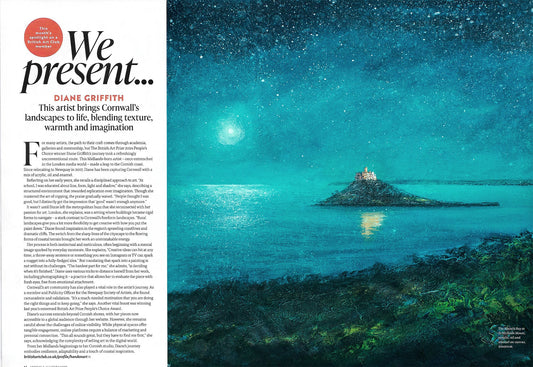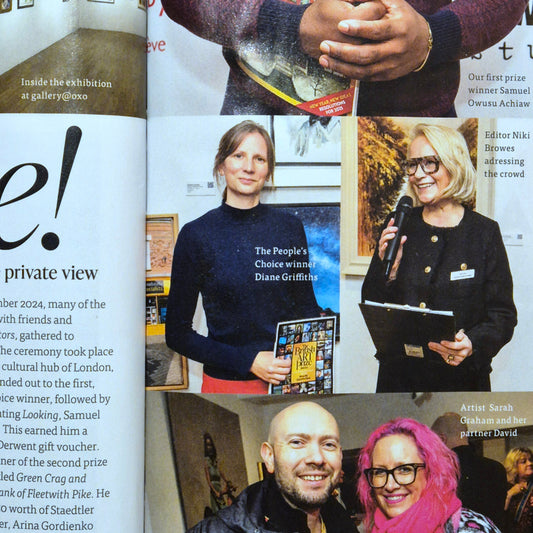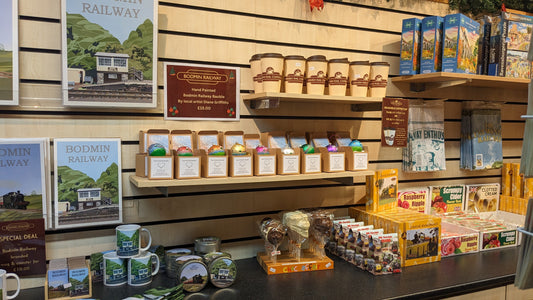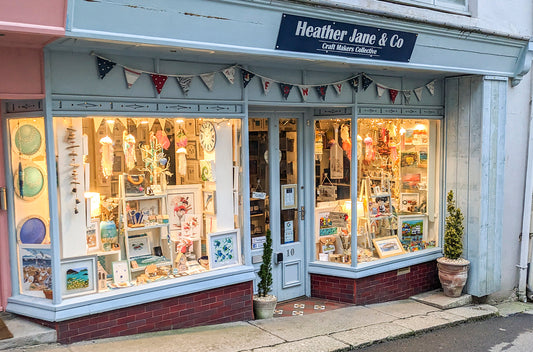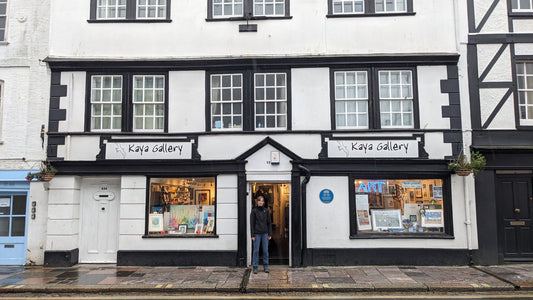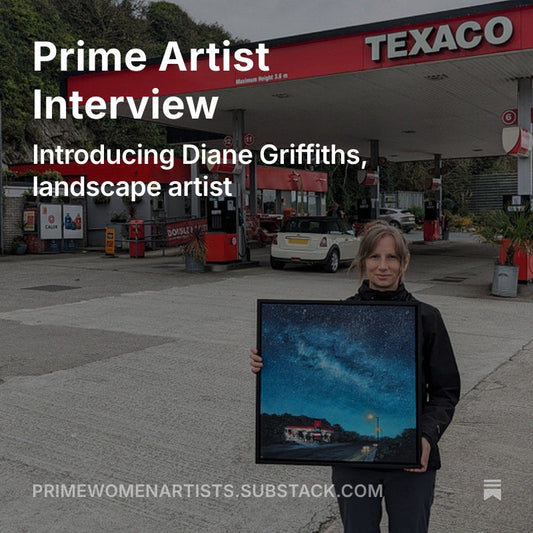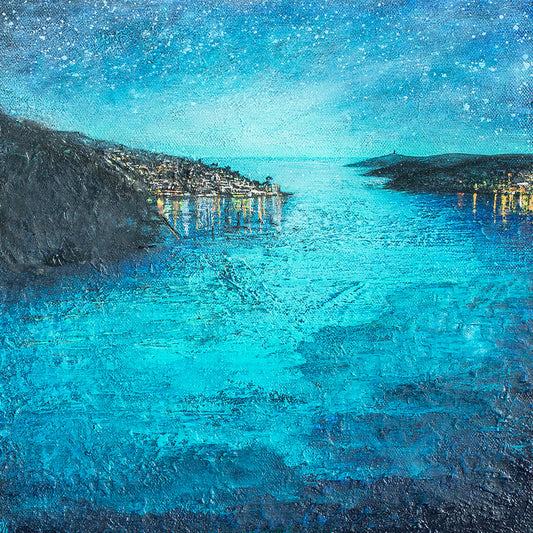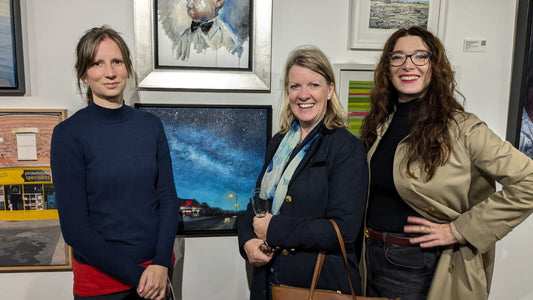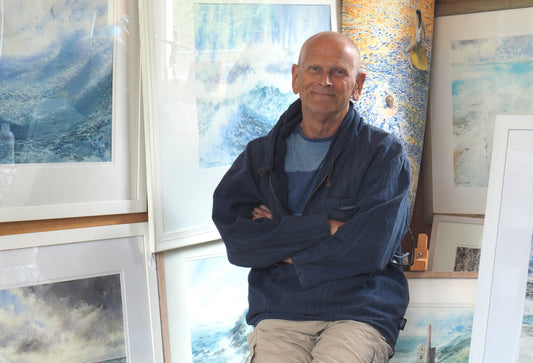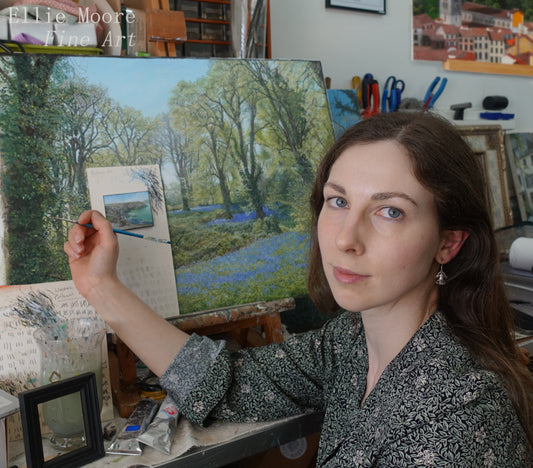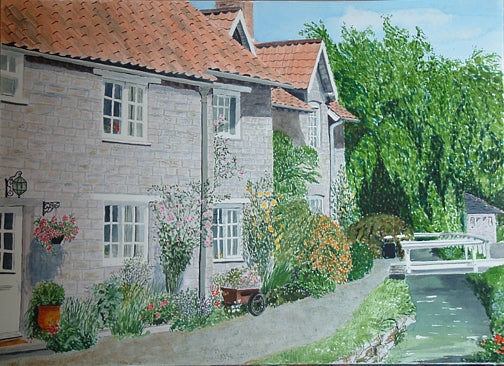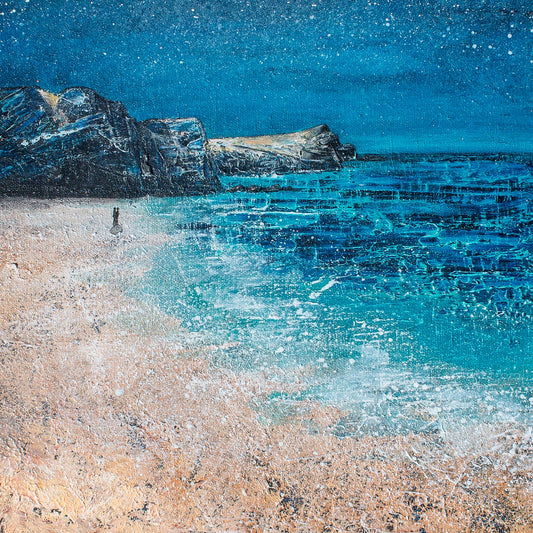Londonart - What Art really Sells? I talked to the Founder of Londonart.co.uk
Share
After moving to Cornwall this year I look back with fond memories of London - while I don't mind a visit - I'd never live there again. But it did make me wonder what's going on with the London art world. I exhibit and sell my paintings online with Londonart.co.uk and decided to get in touch with its owner Paul Wynter to get the latest updates.
To my surprise, as I chatted to Paul I discovered that he also made the London getaway this year - he's moved to Devon! Undeterred I was keen to discover more about the birth of the website and get the inside scoop on what sells best.
How it all Began
I started by asking him how it all started, unsurprisingly Paul said that he was an artist, and back in 1997 he use to attend a life drawing group which included lots of talented artists who found it difficult to sell their work, so he set up Londonart to try and help them and other artists whilst learning how the internet worked.
Now that sounds quite natural to us nowadays - but stop and think for a moment - back in 1997, the internet was still very new. Creating a website was a different beast back then and it was a big risk - many people didn't think the internet would take off. Paul used to go to exhibitions and ask artists to join his website but many people weren't interested, they didn't think that online was the way to go.
Paul persevered and managed to get some funding in the .com gold rush and LondonArt.co.uk grew. In the early years he was hugely busy and at one point had employed 15 staff. However this activity died down and while he has a steady stream of clients and artists joining. It's not quite as busy now - hiring freelancers as and when he needs to support the business.
What Sells?
So now I started to circle the crux of the matter - what sells?!
As soon as Paul said that better artists sell more, he knew I was going to come straight back to him with 'what makes a better artist'?
Well the short story is that even after all these years he still can't figure out what will sell the best; art is too subjective. Naturally I wasn't happy with that answer and tried to find out more about Paul's main clients; which seem to be corporate clients e.g. hotel groups.
What I heard as we discussed further is that quite a few corporate clients just need big artwork to fill space; they have the spaces and need the correct size artwork to fit in them. Usually something not too descriptive - typically an abstract. We'll all seen at least one large abstract art in a hotel right?
Well that's a bit depressing.
Then there is a second category of work which sells, which more complicated and much more difficult to second guess. This is where the 'art is subjective' phrase really hits home. This is where people want art for their personal spaces and therefore want something personal to them. The key is knowing what's personal to them. Do to that, you need to know your target audience; their hopes, dreams, fears and artistic preference!
Build up a Profile
However on a serious note, it certainly pays to take the time to consider who may be interested in your art; where do they live and work, what hobbies to they take up, what do they like to do on weekends. The idea is to build up a profile of your potential buyer. This will not only help you know what type of art they like, but where they are most likely to come across it - and therefore where you should be marketing/exhibiting.
I've sold a handful of pieces via London Art but my work falls firmly into the second category - and after talking to Paul it struck me as to why I haven't sold more. I'm not catering to the majority of his corporate clients. Paul often goes to his clients and points them in the direction of art that he thinks they will like. Well, based on this I very much doubt that my art would make the cut. However that's ok, large corporate businesses aren't my target market, understanding his approach helped me to understand and accept my role in his website.
How to Maximise your Sales
I tried to push Paul a bit more on what tips he would give artists for what to sell. Quite rightly he told me that he couldn't tell artists what to do and wouldn't like to be told what to do, which put me correctly in my place but I did pick up on two gems.
1) A lot of people who buy art for their home want something personal to them, but also they want nicely finished art, on a nice canvas which is well presented; nice, smart clean artwork for nice, smart clean homes. This may sound like common sense, but there are a lot of cheap canvases and materials out there. Presenting your artwork well and even emphasising the quality of the materials as well as the process is definitely something to consider. Something I'm going to take on board with how I present my art.
2) The price point typically seems to be around £500-£1,000, with the next bracket being up to £2,500. Logically - if corporate clients want a large piece of art - they must expect to pay at least £500 for it, so that makes sense. I'm struck with how I'm outside that price point. All of my artworks are under £500 and typically not large pieces. As with all businesses you would be wise to have several price-points to cater for different levels of affordability. I have my petite paintings at around £30-£50, then my medium size paintings at around £60-£150. Perhaps I need to get a little more adventurous with my size range and see if I can break into what I consider as a higher bracket. Again - food for thought.
I really enjoyed catching up with Paul, his website is still going strong, and I'm pleased to hear that he's recently moved to Devon; a fellow London to countryside convert.
Thanks again to Paul for taking the time to talk to me.
To my surprise, as I chatted to Paul I discovered that he also made the London getaway this year - he's moved to Devon! Undeterred I was keen to discover more about the birth of the website and get the inside scoop on what sells best.
How it all Began
I started by asking him how it all started, unsurprisingly Paul said that he was an artist, and back in 1997 he use to attend a life drawing group which included lots of talented artists who found it difficult to sell their work, so he set up Londonart to try and help them and other artists whilst learning how the internet worked.
Now that sounds quite natural to us nowadays - but stop and think for a moment - back in 1997, the internet was still very new. Creating a website was a different beast back then and it was a big risk - many people didn't think the internet would take off. Paul used to go to exhibitions and ask artists to join his website but many people weren't interested, they didn't think that online was the way to go.
Paul persevered and managed to get some funding in the .com gold rush and LondonArt.co.uk grew. In the early years he was hugely busy and at one point had employed 15 staff. However this activity died down and while he has a steady stream of clients and artists joining. It's not quite as busy now - hiring freelancers as and when he needs to support the business.
What Sells?
So now I started to circle the crux of the matter - what sells?!
As soon as Paul said that better artists sell more, he knew I was going to come straight back to him with 'what makes a better artist'?
Well the short story is that even after all these years he still can't figure out what will sell the best; art is too subjective. Naturally I wasn't happy with that answer and tried to find out more about Paul's main clients; which seem to be corporate clients e.g. hotel groups.
What I heard as we discussed further is that quite a few corporate clients just need big artwork to fill space; they have the spaces and need the correct size artwork to fit in them. Usually something not too descriptive - typically an abstract. We'll all seen at least one large abstract art in a hotel right?
Well that's a bit depressing.
Then there is a second category of work which sells, which more complicated and much more difficult to second guess. This is where the 'art is subjective' phrase really hits home. This is where people want art for their personal spaces and therefore want something personal to them. The key is knowing what's personal to them. Do to that, you need to know your target audience; their hopes, dreams, fears and artistic preference!
Build up a Profile
However on a serious note, it certainly pays to take the time to consider who may be interested in your art; where do they live and work, what hobbies to they take up, what do they like to do on weekends. The idea is to build up a profile of your potential buyer. This will not only help you know what type of art they like, but where they are most likely to come across it - and therefore where you should be marketing/exhibiting.
I've sold a handful of pieces via London Art but my work falls firmly into the second category - and after talking to Paul it struck me as to why I haven't sold more. I'm not catering to the majority of his corporate clients. Paul often goes to his clients and points them in the direction of art that he thinks they will like. Well, based on this I very much doubt that my art would make the cut. However that's ok, large corporate businesses aren't my target market, understanding his approach helped me to understand and accept my role in his website.
How to Maximise your Sales
I tried to push Paul a bit more on what tips he would give artists for what to sell. Quite rightly he told me that he couldn't tell artists what to do and wouldn't like to be told what to do, which put me correctly in my place but I did pick up on two gems.
1) A lot of people who buy art for their home want something personal to them, but also they want nicely finished art, on a nice canvas which is well presented; nice, smart clean artwork for nice, smart clean homes. This may sound like common sense, but there are a lot of cheap canvases and materials out there. Presenting your artwork well and even emphasising the quality of the materials as well as the process is definitely something to consider. Something I'm going to take on board with how I present my art.
2) The price point typically seems to be around £500-£1,000, with the next bracket being up to £2,500. Logically - if corporate clients want a large piece of art - they must expect to pay at least £500 for it, so that makes sense. I'm struck with how I'm outside that price point. All of my artworks are under £500 and typically not large pieces. As with all businesses you would be wise to have several price-points to cater for different levels of affordability. I have my petite paintings at around £30-£50, then my medium size paintings at around £60-£150. Perhaps I need to get a little more adventurous with my size range and see if I can break into what I consider as a higher bracket. Again - food for thought.
I really enjoyed catching up with Paul, his website is still going strong, and I'm pleased to hear that he's recently moved to Devon; a fellow London to countryside convert.
Thanks again to Paul for taking the time to talk to me.
